Peoples of the Arctic: Virtual Bookshelf
The Virtual Bookshelf provides a list of recommended children’s books that reflect the theme of the issue and offers ideas on how to integrate them across the curriculum.
A number of diverse cultures have lived above the Arctic Circle for thousands of years. The people survived in regions where temperatures fall to minus 90 degrees Fahrenheit and there’s little to no sunlight for half of the year. The Inuit of Canada, the Inupiat (Inuit people of the Alaskan Arctic), and the Sami of the European Arctic (Norway, Sweden, Finland, and Russia) built shelters in the shallow earth, hunted and fished through snow and ice, domesticated reindeer, and designed tools and devices for coping with their surroundings, including snow goggles (similar to sunglasses) and skis.
Even though Arctic cultures have changed in response to the technology, materials, and lifestyles of outside cultures, many people still rely on traditional skills and ways of knowing. But, as climate change causes the Arctic to warm, permafrost to thaw, and sea ice to decline, these traditional ways of life are at increasing risk.
We’ve divided this month’s bookshelf into five categories: general books about Arctic peoples, Inuit, Inupiat, Sami, and of course, Penguins and Polar Bears. You’ll find plenty of nonfiction as well as selected fiction and craft books that can greatly enhance a unit about the native peoples of the Arctic region.
General Books About Indigenous People of the Arctic
 |
Living in the Arctic. Allan Fowler. 2000. Nonfiction. Grades K-2.This early reader explains the climate of the Arctic and gives a few facts about the Inuit who live there. Children will learn that Inuit families lived in homes made of earth, stone, and animal skins and igloos made of hard snow. Readers are also introduced to the Sami of northern Europe. |
 |
Native American Crafts of the Northwest Coast, the Arctic and the Subarctic. Judith Hoffman Corwin. 2002. Nonfiction. Grades K-5.Teachers and students will find craft ideas inspired by traditional artwork of the Inuit, Inupiat, and Yup’ik people. Make a “sealskin” bracelet from chamois cloth, a record stick from balsa wood, ivory carvings from soap, and much more. |
 |
The Year of Miss Agnes. Kirkpatrick Hill. 2000. Fiction. Grades 2-5.An Athabascan village can’t seem to keep a mainland teacher because of the cultural differences. But this year is different—Miss Agnes comes. She respects the children’s roots and encourages the children and their parents to value learning about people and things outside their town. Although the Athabascan people live below the Arctic Circle, their story illustrates the realities of life in an isolated rural village and the cultural differences between traditional and modern cultures. Questions for a book discussion are also available. |
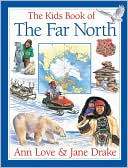 |
The Kids Book of the Far North. Ann Love and Jane Drake. 2000. Nonfiction. Grades 3-5.The indigenous people of the Arctic are the subjects of the last half of this book. From the Sami people of Scandinavia to the Nenet, Evenki, and Nganasan of Sibera, ancient people adapted shelter and clothing for the harsh winters—and even domesticated reindeer! Inuit and Inupiat peoples are discussed as well, including the effects of modern conveniences on their lifestyles. Traditional art and the future of indigenous people are also discussed. In 1999, Canada created a new territory that will be governed by the Inuit people who live there. |
Inuit
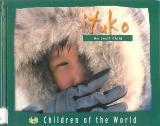 |
Ituko: An Inuit Child. Children of the World, Blackbirch Press. 2000. Nonfiction. Grades K-5.Ituko lives in Greenland. Photographs show a modern village of wooden homes with electricity. He goes to school, rides a bike, visits the library, and even goes swimming. During the summer, his family goes camping, hunting and fishing. |
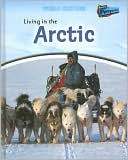 |
Living In the Arctic. Neil Morris. 2008. Nonfiction. Grades 1-4.Students will get a well-rounded picture of Inuit life, from their communities to their clothing, school, food, beliefs, art, and entertainment. Photographs show children and their families at work and play. |
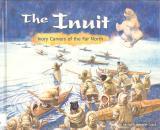 |
Inuit: Ivory Carvers of the North. Rachel Koestler-Grack. 2004. Nonfiction. Grades 2-5.Learn how the Inuit lived before modern household conveniences became available. Discover why the term “Eskimo” is inappropriate and learn about the diet and clothing that allowed the early Inuit to survive in harsh conditions. A number of illustrations showing an igloo give the false impression that Inuit spent a lot of time in these structures, but the text explains that igloos were used for winter camp and the people spent most of their time in dugout structures and tents. The book includes activities: ivory-like soap carving, a blueberry treat, and a game called Bilboquet. |
 |
The Inuit. Andrew Santella. 2001. Nonfiction. Grades 2-5.Learn about the Inuit people: their origins, hunting traditions, artwork, clothing, and shelter. The last two chapters discuss the Canadian government’s agreement to establish a self-governed territory for the Inuit called Nunavut, meaning “our land.” |
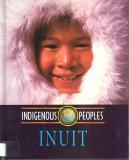 |
Inuit. Indigenous Peoples. Leslie Strudwick. 2004. Nonfiction. Grades 4-5.A comprehensive overview of Inuit culture, including stories and legends, social structures, communication, law and order, art, holidays, food, and issues facing the Inuit. Best for advanced readers. |
Inupiat
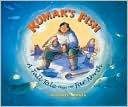 |
Kumak’s Fish: A Tall Tale of the North. Michael Bania. 2004. Picture Book. Grades K-2.A fun story of a village coming together to pull out a big fish from a frozen lake is based on the author’s observation of an Inupiat village bringing in a whale from the ocean. Though the story is fictional, children will learn that many of today’s Inupiat live in homes that look like ours. They will also learn that fishing and whaling are still traditions many families enjoy and depend upon. |
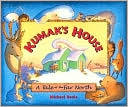 |
Kumak’s House: A Tale of the Far North. Michael Bania. 2002. Picture Book. Grades K-2.This folktale shares a humorous lesson while introducing students to traditional Inupiat activities and animals of the Arctic. An author’s note details the wealth of information that can be learned from the book’s rich illustrations. |
 |
The Lamp, The Ice and the Boat Called Fish. Jacqueline Briggs Martin. 2001. Nonfiction Picture Book. Grades 2-5.In 1913, the Canadian Arctic Expedition set out to explore the Arctic Ocean. In addition to the ship Karluk’s crew, many scientists were on board—but none of them had the expertise to survive on the harsh, barren ice. Knowing that the ship would eventually become frozen in the ice, they hired an Inupiat family to guide them, to sew warm clothes, and to hunt for food. Even the Inupiat struggled to survive once the ship sank and their resources dwindled. But without the Inupiat family’s help, nobody would have survived to witness the miracle of a rescue mission that came to save them the following spring. |
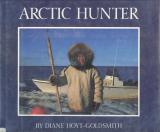 |
Arctic Hunter. Diane Hoyt-Goldsmith. 1992. Nonfiction. Grades 3-5.Reggie, an Inupiat boy, shares his experience hunting and fishing after the winter ice sheets begin to break away from the shoreline, making sounds so loud they sound like gunshots. Reggie and his family make camp in a sod house and use nets to catch fish, clean them and hang them to dry. It takes great patience to hunt seal that only come to the water surface for air. The family also spends time gathering firewood, building fires, finding wild herbs for tea, and making a “refrigerator” by digging a hole in the permafrost. Reggie talks about life in his home, the games he enjoys, and what he learns at school. Students may identify with a child very much like themselves portrayed in the book. |
SAMI
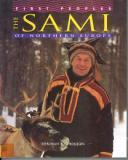 |
The Sami of Northern Europe. Deborah Robinson. 2002. Nonfiction. Grades 4-5.The Sami people live in the northern portions of Norway, Sweden, Finland and Russia. They adapted to the harsh climate by fishing, hunting and gathering. Later they were able to catch and tame reindeer and became herders. They are also considered to be the inventors of skiing. Today less than 10 percent of Sami herd reindeer for a living. The Sami still enjoy culturally unique traditions in games, art and languages. |
Penguins and Polar Bears
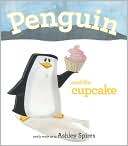 |
Penguin and the Cupcake. Ashley Spires. 2008. Picture Book. Grades K-2.A penguin decides to take a trip to the North Pole to search for cupcakes. The penguin makes many factual errors about the Arctic that the author has to correct, making students laugh as they read about the penguin taking a plane because he can’t fly and meeting a polar bear who thinks about eating him (which would never happen because they don’t live in the same hemisphere). |
 |
Polar Bear, Why Is Your World Melting? Robert E. Wells. 2008. Nonfiction Picture Book. Grades K-4.Earth’s climate has been warming each year, and the biggest impact can be seen in the poles. Summers are lasting longer and the ice is melting more quickly. Perhaps no other animal is quite as affected as the polar bear; it depends on ice to hunt seals. Children will learn how humans’ energy use contributes to global warming and climate change all over the world. |
This article was written by Kate Hastings. For more information, see the Contributors page. Email Kimberly Lightle, Principal Investigator, with any questions about the content of this site.
Copyright October 2009 – The Ohio State University. This material is based upon work supported by the National Science Foundation under Grant No. 0733024. Any opinions, findings, and conclusions or recommendations expressed in this material are those of the author(s) and do not necessarily reflect the views of the National Science Foundation. This work is licensed under an Attribution-ShareAlike 3.0 Unported Creative Commons license.

















